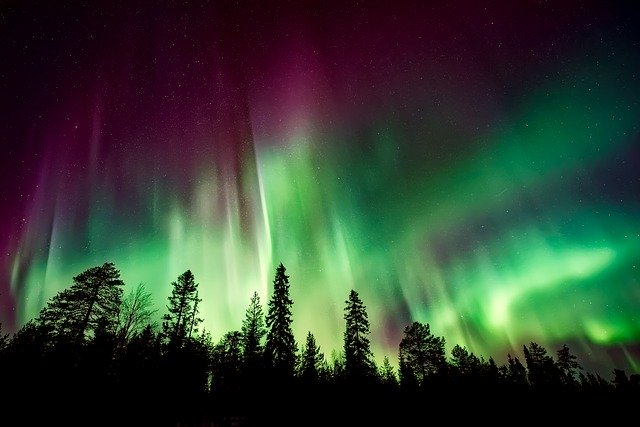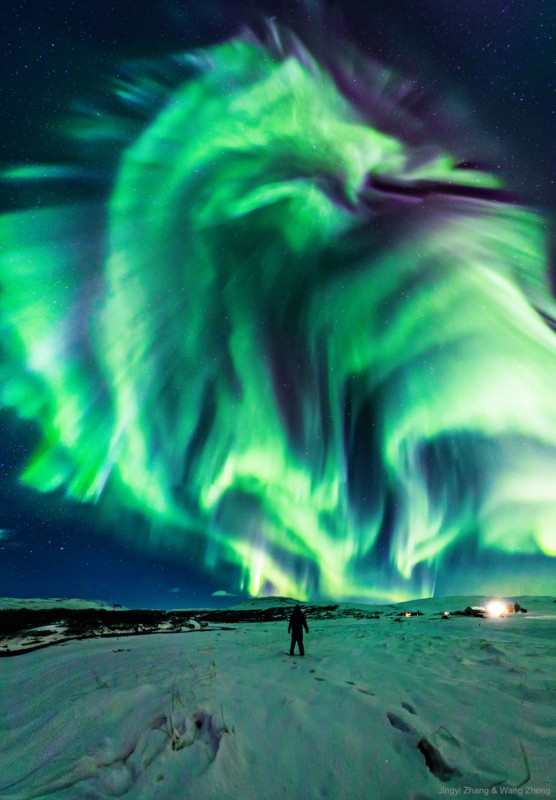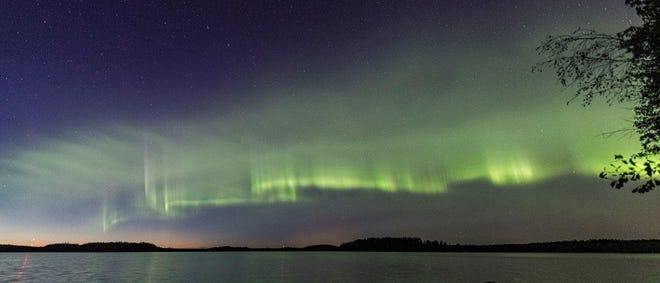 For those who live in the far northern regions of our world, the skies put up a spectacular show every now and then.
For those who live in the far northern regions of our world, the skies put up a spectacular show every now and then.
These beautiful northern lights, known as Aurora Borealis, are caused when charged particles from the Sun interact with our Earth's atmosphere and magnetic field.
Recently, amateur stargazers in Finland have discovered a new kind of aurora. Minna Palmroth and her coworkers realized that the aurora they were observing did not fit any of the known categories.
Types of Auroras
 Let's first look at the science behind the auroras.
Let's first look at the science behind the auroras.
Every now and then, our Sun releases large quantities of magnetically charged particles. When these charged particles hit the Earth's atmosphere, they are directed towards the poles by the Earth's magnetic field -- much like water flows around a stone.
At the poles, they collide with the oxygen and nitrogen atoms in the atmosphere, causing them to light up. Oxygen generally produces colors ranging from green to red, and nitrogen produces shades of purple and blue. Since the intensity of the light produced is low, the auroras can only be seen at night time.
A few types of commonly observed auroras are
- The Arc: They appear as long curves, much like rainbows, and can be seen from horizon to horizon. This type is common during times of low solar activity and can become distorted when solar activity increases.
- The Band: These are ribbon-like and more common. They move slowly or at moderate speeds, but when they go faster, they appear to be dancing!
- The Ray: These auroras appear as columns that reach into outer space, and are a sign of high solar activity. They can be seen moving and dancing as well.
- The Corona: These are rare, but spectacular should you catch one! They appear in the shape of a crown and are the brightest, fastest, and the most colorful.
A New Type Of Aurora
 The new aurora, nicknamed "dunes" has a wave-like pattern and resembles sand dunes.
The new aurora, nicknamed "dunes" has a wave-like pattern and resembles sand dunes.
Unlike other auroras that display different colors, the dunes are only green in color which means they bounce off oxygen atoms. The dunes auroras were spotted in the mesosphere, the third and coldest layer of the atmosphere which is located between the stratosphere and the thermosphere.
How do dune auroras form? When two air masses of different temperatures collide, they create disturbances in the form of waves -- just as we would see in the water when a speed boat powers through. Scientists use the term "bore" to describe the wave pattern of disturbance and since this takes place in the mesosphere, it is known as a "mesospheric bore."
The horizontal disturbances cause oxygen molecules in the mesosphere to clump together and spread apart. When the solar particles collide with these oxygen molecules, they create green wave-like patterns. The northern lights are definitely a sight to behold, for those who are lucky enough to witness them!
Sources: Gizmodo, ucar.edu, NASA, Guardian, Aurorahunter






